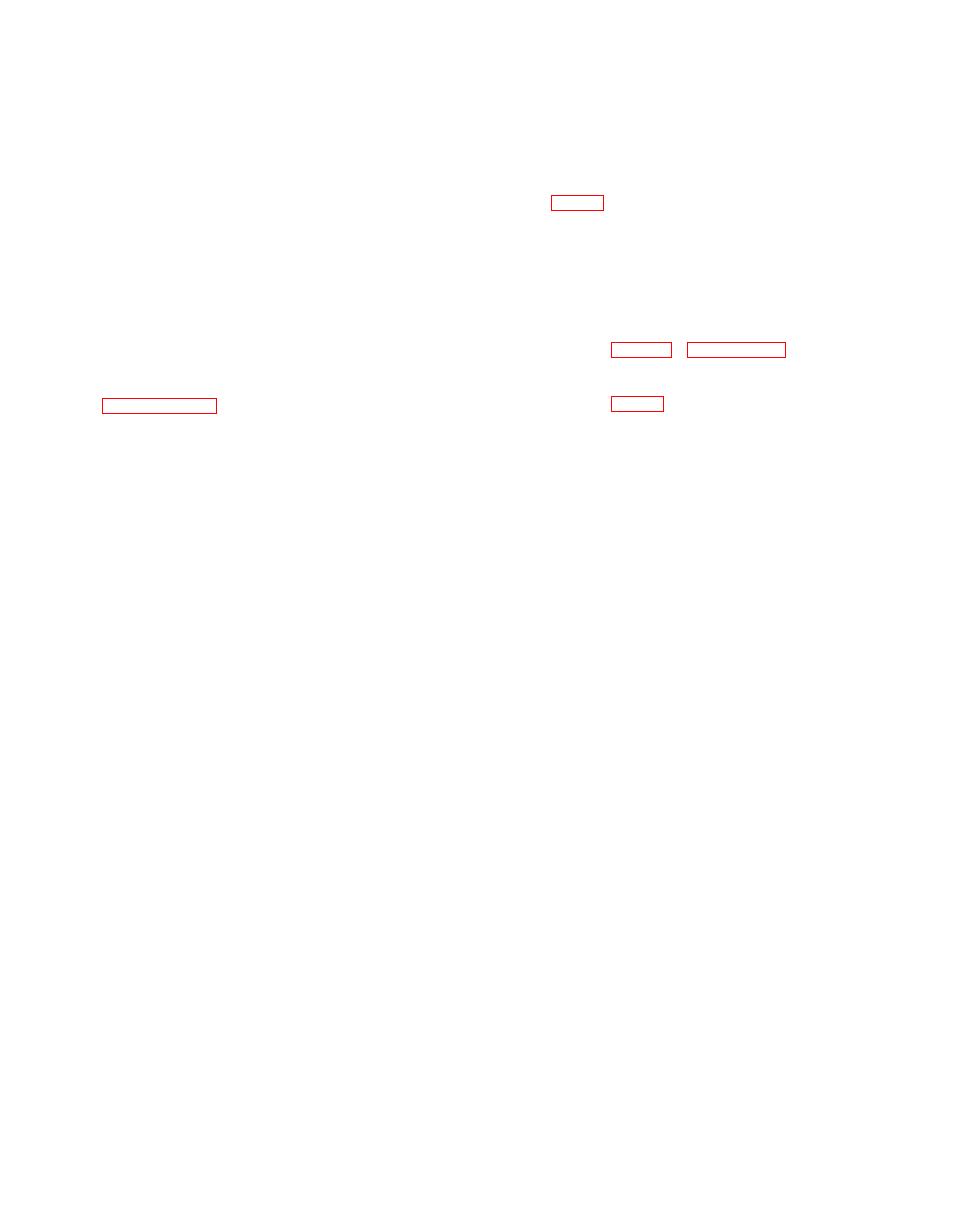 |
|||
|
|
|||
|
Page Title:
Section VII. EXTENSION CABLE TROUBLESHOOTING |
|
||
| ||||||||||
|
|
 TM 9-1270-212-l4&P
Section VII. EXTENSION CABLE TROUBLESHOOTING
diagram (fig. 1-13). Repair the extension cable, if possible.
4-27. General.
Replace the extension cable if the problem cannot be
remedied.
This section provides troubleshooting procedures for the
extension cable by using the fire control subsystem test set.
4-29. Extension Cable Helicopter Checkout Procedures.
The tests are performed on the bench or in the helicopter.
Disconnect W 1 PI from the gunner linkage. Connect
W1P1 to A2P1 on the known-good pilot linkage. Perform
steps 1, 2, and 3 of table 4-2 in paragraph 4-14. If a failure
Connect the extension cable between A3P1 or A2P1 of a
occurs, use a multimeter and check for continuity, opens,
known-good linkage assembly and the J15 EXT CABLE
or shorts (shields also). Refer to the extension cable
receptacle on the test set. Perform the linkage assembly test
schematic diagram (fig. 1-13). Repair the extension cable, if
possible. Replace the extension cable if the problem cannot
multimeter and check for continuity, opens, or shorts
be remedied.
(shields also). Refer to the extension cable schematic
Section VIII. PREEMBARKATION INSPECTION OF MATERIEL
IN UNITS ALERTED FOR OVERSEAS MOVEMENT
4-30. General.
c. Material must be free of burrs, particularly those on
functional surfaces.
This inspection is conducted on materiel in alerted units
d. Parts must not be cracked, bent, distorted, or
scheduled for overseas duty to insure that such materiel will
damaged and must be free of detrimental wear.
not become unserviceable in a relatively short time. The
inspection prescribes a higher percentage of remaining
e. Rivets must be tight.
usable life in serviceable materiel to meet a specific need
beyond minimum serviceability.
f. Painted surfaces must be free of bare spots.
g. Operating controls must function smoothly.
4-31. Inspection Points.
h. Identification plates must be present and secure.
a. Screwheads must be in serviceable condition, and
threads must not be stripped. Internal threads must not be
i. Inspect electrical components for improper
stripped.
functioning, physical damage, and missing parts.
b. Cable assemblies must not have loose or damaged
j. Inspect optical parts for cracks, scratches, and
connections, cut or worn insulation, broken wires, kinks, or
moisture on the inside of the optical cell.
sharp bends.
|
|
Privacy Statement - Press Release - Copyright Information. - Contact Us |